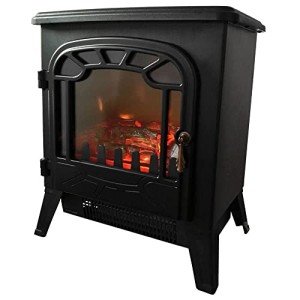Your Family Will Thank You For Getting This Fireplace
The Fireplace: A Warm Embrace of Tradition and Comfort
Fireplaces have been an essential part of human habitation for centuries, working as a source of warmth, an event location, and a sign of comfort. While the modern versions might differ remarkably from their ancient ancestors, the attraction of a fireplace endures. This short article checks out the numerous aspects of fireplaces, including their history, function, types, and maintenance, while also resolving regularly asked concerns.
The Evolution of Fireplaces
Fireplaces go back to prehistoric times when open flames were used for cooking, heating, and defense from wildlife. Over the centuries, fireplaces developed from easy fire pits to the sophisticated performances we see today. Here is a short timeline of their evolution:
- Prehistoric Era: Cavemen utilized open flames for heat and cooking. Buy Fireplace and smoke often blew into dwellings.
- Middle Ages: Stone and brick fireplaces became common in homes and castles, integrating chimneys to carry smoke outside.
- Renaissance: Elaborately designed mantels emerged, and fireplaces became centers of social interaction.
- Industrial Revolution: Innovations in heating materials led to a range of designs and functionalities.
- Modern Era: The advent of natural gas, electric, and bioethanol fireplaces supplied cleaner options to traditional wood-burning systems.
Table 1: The Evolution of Fireplaces
Age
Characteristics
Prehistoric Era
Open flames for heat and cooking
Middle Ages
Stone and brick structures with early chimneys
Renaissance
Ornate mantels, social centers
Industrial Revolution
Diverse styles, advent of new materials
Modern Era
Gas, electric, and bioethanol options
The Purpose of a Fireplace
Fireplaces serve dual functions: they offer physical heat and develop a psychological environment. Homeowners frequently gather around the fireplace to bond, share stories, and delight in a cozy setting. The radiance of a fire can be relaxing, adding to a sense of relaxation and intimacy. Beyond individual enjoyment, fireplaces also offer functional benefits, including:
- Home Heating: Effective heat source, particularly in colder climates.
- Increased Home Value: A well-designed fireplace can boost the aesthetic worth of a home.
- Emergency Heating: In case of power interruptions, wood-burning fireplaces can work as a crucial heat source.
- Visual Appeal: A centerpiece that adds to interior decor.
Types of Fireplaces
Today, fireplaces come in different styles and fuel types, accommodating a diverse variety of preferences and settings. Here are some typical types:
Wood-Burning Fireplaces:
- Traditional fire pits
- Timeless masonry fireplaces
- Require substantial maintenance and chimney upkeep
Gas Fireplaces:
- Available in both direct vent and ventless varieties
- Simpler to use and keep than wood-burning fireplaces
- Offer instant heat with a flick of a switch
Electric Fireplaces:
- Offer associated heat sources without genuine flames
- Frequently designed to mimic traditional fireplaces
- Suitable for smaller areas and homes without a chimney
Bioethanol Fireplaces:
- Use bioethanol fuel, supplying a sustainable option
- Require no ventilation and can be put anywhere
- Safe and simple to keep
Table 2: Types of Fireplaces
Type
Fuel Source
Features
Upkeep Requirements
Wood-Burning
Wood
High ambiance, heat source
Regular chimney cleaning
Gas
Gas or lp
Instant heat
Minimal, periodic maintenance
Electric
Electrical energy
Easy setup
Very low maintenance
Bioethanol
Bioethanol fuel
Ventless, portable
Low, mainly cleaning up
Upkeep and Safety Considerations
Owning a fireplace involves certain duties, especially concerning its safe operation and long-term maintenance. Here are crucial maintenance tips and safety standards:
Maintenance Tips:
- Annual Inspection: Always have your chimney and fireplace checked a minimum of when a year by a certified technician.
- Regular Cleaning: Clean out ashes and debris after each usage, and ensure the flue is open before beginning a fire.
- Check for Cracks: Inspect masonry for fractures or damage to avoid structural problems.
- Usage Proper Fuel: Only usage dry, experienced wood for wood-burning fireplaces; do not burn cured wood.
Safety Guidelines:
- Install Smoke Detectors: Ensure smoke alarm are functional, testing them month-to-month and replacing batteries as needed.
- Keep a Fire Extinguisher: Have one neighboring, even if a fireplace is utilized occasionally.
- Monitor Flames: Never leave a fire unattended, and guarantee kids and pets are monitored around the fireplace.
Regularly Asked Questions (FAQs)
1. How can I reduce smoke from a wood-burning fireplace?
To lessen smoke, usage dry, skilled wood, and make sure that your chimney is clean and unobstructed.
2. Is it safe to use gas fireplaces throughout a gas leak?
Never utilize a gas fireplace throughout a gas leak. Immediately leave the area and contact gas services for assistance.
3. Can I set up an electric fireplace myself?
Electric fireplaces are usually simple to install, but it is recommended to speak with professionals to make sure security and compliance with regional building regulations.
4. What is the very best kind of fireplace for small spaces?
Electric fireplaces or bioethanol models are often best for small spaces, as they do not need substantial ventilation or structural modifications.
Fireplaces have transcended their original function of providing heat to become treasured elements of home style and family life. They stimulate memories of warmth, celebrations, and togetherness while providing functional benefits that enhance modern living. By understanding the different types of fireplaces, their maintenance, and security practices, house owners can enjoy the ageless appeal of this beloved feature for generations to come.
